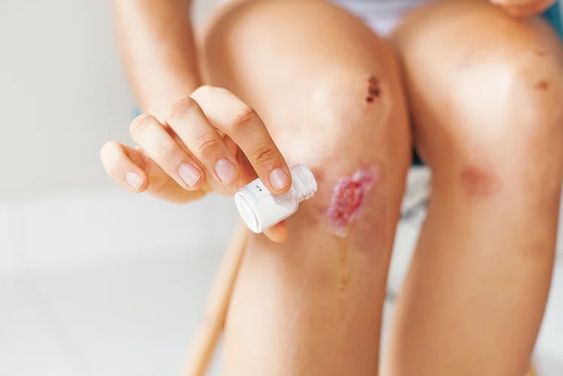Pain is a common response when our bodies are injured, whether from accidents or illness. Understanding the causes and types of pain is critical to how we cope with and relieve it.
Wound pain includes both nociceptive pain and neuropathic pain. The former is caused by tissue damage and manifests as sharp pain or tingling; while the latter is caused by damage or dysfunction of the nervous system and usually manifests as burning, tingling, or tingling in the affected area.
The symptoms and everyday causes of pain vary. For example, background pain is intermittent or persistent pain at the wound site that may be present even at rest; concomitant pain is pain at the wound site that occurs when performing daily activities such as sneezing, coughing, walking, or changing postures; Procedural pain is directly related to wound management procedures such as dressing changes; whereas surgical pain results from invasive wound interventions such as wound debridement or biopsy.
Treatment options vary for acute and chronic wounds, but the goals are the same: to promote healing and improve outcomes. For pain management, you can start with non-steroidal anti-inflammatory drugs such as ibuprofen and gradually upgrade to more effective opioids if necessary, but be aware of the risk of addiction.
In summary, understanding and coping with pain is an important skill for everyone to learn. Whether you are self-adjusting or seeking medical help, it is all about taking better care of yourself and improving your quality of life. Anticonvulsant medications can also control wound pain. The use of local anesthesia can reduce the patient's pain before dressing changes. For certain procedures with severe pain, regional or epidural nerve blocks or lumbar sympathectomy can be used with good results. In addition to pharmacotherapy, non-pharmacological interventions are also a good option. For example, transcutaneous electrical nerve stimulation (TENS), ultrasound therapy, and pulsed radiofrequency energy (PRFE) can all relieve pain.
Involving patients in pain management options and actual dressing changes can reduce their anxiety and aid wound healing. Simple distraction techniques, such as listening to music, can sometimes help patients complete dressing changes comfortably. Developing a pain relief treatment before dressing changes will greatly enhance the experience and effectiveness of the entire healing process.
Preventing and controlling wound infections is critical because infected wounds can lead to increased pain. Depending on the wound condition and exudate culture results, antimicrobial and antibiotic treatments may be used to effectively reduce the infection and associated pain. Additionally, topical antimicrobial therapy during standard dressing changes is a viable option.
Wound pain has a significant impact on patient's quality of life. There are a variety of treatment options available, including non-pharmacological, pharmacological, non-invasive, and invasive. With the guidance of a healthcare professional, options are available for managing acute and chronic wound pain. It may take some trial and exploration to find what works best for each patient and each unique clinical situation. The expertise and patience of medical staff, as well as the active participation of patients, will work together to find the best and most effective treatment options.
For more information on Innomed® Silicone Foam Dressing, Refer to the Previous Articles. If you have customized needs, you are welcome to contact us; You Wholeheartedly. At longterm medical, we transform this data by Innovating and Developing Products that Make Life Life easier for those who need loving care.
Editor: kiki Jia
Date: January 31, 2023

 English
English عربى
عربى Español
Español русский
русский 中文简体
中文简体








